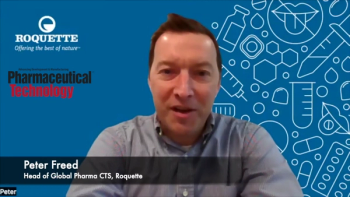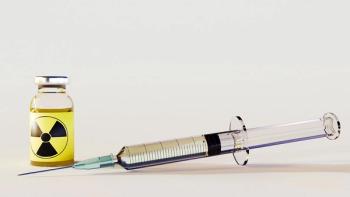
Enhancing Topical Delivery Using Prodrugs
The permeation of drugs through the skin is compromised by the presence of polar functional groups such as thiols, alcohols, phenols, imides or amides. By transiently masking these polar functional groups as prodrugs the permeability of drugs containing these functional groups through the skin can be improved.
The permeation of drugs through the skin is compromised by the presence of polar functional groups such as thiols, alcohols, phenols, imides or amides. By transiently masking these polar functional groups as prodrugs the permeability of drugs containing these functional groups through the skin can be improved.
The prodrug approach relies on transiently masking polar functional groups so that once in vivo the inactive prodrug molecule is biotransformed into the active drug molecule to exhibit its pharmacological activity.1 In most cases, the drug functional groups are masked as simple alkyl esters. Acyloxymethyl (ACOM, R'COOCH2-, where R is an alkyl group) and alkyloxycarbonyloxymethyl (AOCOM, R'OCOOCH2-) promoieties have been used to derivatize carboxylic acids in cases where the simple alkyl ester approach was not useful because, although simple alkyl esters were reasonably stable chemically and they could be conveniently formulated, they were not sufficiently labile enzymatically.1
Replacing the -OCH2 group in R'OCOOCH2 with a -NRCH2 group to give a N-alkyl-N-alkyloxycarbonylaminomethyl (NANAOCAM, R'OCONRCH2-) promoiety could offer medicinal chemists flexibility to improve solubility (better balance between solubilities in lipid and water) and stability (enzymatic versus chemical) of prodrugs derived from a parent drug molecule.2,3
It is now well-established that an adequate balance between lipid and water solubility is needed to improve topical delivery through the skin (because skin is a biphasic barrier).4–6 Stability is also improved because phenolic drug molecules such as vitamin E and Naloxone are prone to aerial oxidation, however, manufacturing prodrugs prevents oxidation of the functional group.
In this article we will review prodrug approaches using the NANAOCAM promoiety and its effect on the topical delivery of three different classes of drugs:
- 6-mercaptopurine (6MP, a thiol-containing drug, pKa ;7.5)
- acetaminophen (APAP, a model phenolic drug, pKa ;9.5)
- theophylline (ThH, an imide-containing drug, pKa ;8.6).
Synthesis of prodrugs
Synthesis of NANOCAM prodrugs of 6MP, APAP and ThH was achieved by alkylating the parent drug molecule with N-alkyl-N-alkyloxycarbonylaminomethyl chloride (NANAOCAM-Cl). NANAOCAM-Cl was synthesized by reacting an alkyl amine with an alkyl chloroformate to yield an N-alkyl carbamic acid alkyl ester.7
Chloromethylation of N-alkyl carbamic acid alkyl ester with paraformaldehyde and trimethylsilylchloride gave the desired alkylating agent, which was used to alkylate the drug molecule (6MP, APAP or ThH) in the presence of a weak base such as triethylamine (Figure 2).
NANAOCAM prodrugs of 6MP
NANAOCAM prodrugs of 6MP were synthesized and characterized by Siver et al.9 These derivatives were found to be chemically labile and hydrolyzed to the parent drug by a SN1 type of mechanism with a t1/2 90–108 min at pH 7.1 and 32 °C with 6MP acting as the nucleofuge.
The hydrolysis followed first-order kinetics and was independent of pH. Solubilities in IPM (SIPM) and partition coefficients between IPM and pH 4.0 buffer (KIPM:4.0) of 6MP and its prodrugs were also determined. Solubility in pH 4.0 buffer was estimated from SIPM/KIPM: 4.0. Diffusion cell experiments using hairless mouse skins and IPM as a vehicle were performed (Table 1, compounds 1–5).
Of all the derivatives tested C1-NANAOCAM-6MP, 2, showed the maximum increase in flux in in vitro diffusion cell studies. This particular derivative was 1.29-fold more water soluble, 67-fold more lipid-soluble than 6MP and improved permeation through the skin by about 8-fold. None of the other more lipid-soluble prodrugs tested was effective in increasing the flux of 6MP through hairless mouse skins because they were less water-soluble than 6MP. Complete conversion of the NANAOCAM prodrugs to 6MP occurred on their passage through hairless mouse skins.
NANAOCAM prodrugs of APAP
The synthesis and hydrolysis of NANAOCAM prodrugs of APAP was reported by Majumdar et al.2 NANAOCAM prodrugs of APAP follow a SN1 type of hydrolysis with t1/2 of 60 h at pH 8.8 and 46 °C. The rates of hydrolysis were much slower than their thiol counterparts.9 All synthesized prodrugs were characterized by their solubilities in isopropyl myristate (SIPM), solubilities in water (SAQ), partition coefficients between IPM and pH 4.0 buffer (KIPM:4.0) and by their ability to penetrate hairless mouse skin from IPM (JMIPM) (Table 1, compounds 6–11).10
As in the case of 6MP, the C1-NANAOCAM-APAP, 7, gave the highest delivery of total APAP-containing species (2-fold) through hairless mouse skins from IPM. This derivative was also the most water-soluble among the more lipid-soluble members of the series being 7.4-fold more lipid-soluble and 0.46-fold as water-soluble as APAP. The second most water-soluble member of the series, 8, also delivered more APAP-containing species than APAP. The most lipid-soluble member of the series 11 (69 times higher than APAP) gave the lowest delivery (0.43 times that of APAP). NANAOCAM prodrugs of APAP, however, showed poor bioconversion to the parent drug, which limits their application as topical prodrugs. About 80% of intact prodrug was observed after diffusion through hairless mouse skins from IPM after 48 h.
NANAOCAM prodrugs of ThH
NANAOCAM prodrugs of ThH were synthesized and characterized by Majumdar and Sloan.11 In the NANAOCAM-Th series (Table 1, 12–18), C2-NANAOCAM-Th, 14, gave the highest delivery of total ThH-containing species flux through the skin. 14 was the most lipid-soluble (64-fold and water-soluble member (0.39-fold) of the series and hence gave the best delivery (1.5-fold) through skin. The C6 derivative, 17, performed the worst of all derivatives even though it was the second most lipid-soluble molecule in IPM because it was the least water-soluble member in the entire series. NANAOCAM prodrugs of ThH converted to ThH on their passage through hairless mouse skins more completely than NANAOCAM prodrugs of APAP. Approximately 32% of intact prodrug was observed after diffusion through hairless mouse skins from IPM after 48 h.
Conclusion
The NANAOCAM promoiety has been used to derivatize three types of drug functional groups - thiols, phenols and imides - as prodrugs. Moderate improvement in flux across hairless mouse skins from IPM were observed for all three classes of drugs. In every series, it was the most water-soluble member of the series that gave highest flux through the skin. Solubility in both lipid and water phases is paramount to improving flux through the skin.
Susruta Majumdar received his BS and MS in chemistry from Dehli University (India). He then received his PhD in medicinal chemistry under the mentorship of Professor Kenneth B. Sloan at the University of Florida (Gainsville, FL, USA). He is presently a research fellow at the Memorial Sloan Kettering Cancer Center (New York, NY, USA) in molecular pharmacology and chemistry.
Kenneth B. Sloan received his PhD from University of Missouri (CO, USA) in organic chemistry. He worked as a postdoctoral assistant at the University of Minnesota, (Minneapolis, MN, USA) for 2 years, a sabbatical leave replacement for 1 year at the University of Virginia (Charlottesville, VA, USA), and as a senior research scientist at Interx Research Corp. in Lawrence (Kansas, USA) for 8 years. He then joined the Department of Medicinal Chemistry at the University of Florida and has been pursuing research in the field of topical delivery using prodrugs.
References
1. H. Bundgard, "Design and application of prodrugs" in P. Krogsgaard-Larsen and H. Bundgard, Eds, A Textbook of Drug Design and Development (Harwood, Reading, UK, 1991), pp 113–191.
2. S. Majumdar and K.B. Sloan, Bioorg. Med. Chem. Lett., 16, 3590–3594 (2006).
3. S. Majumdar and K.B. Sloan, Bioorg. Med. Chem. Lett., 17, 1447–1450 (2007)
4. K.B. Sloan, Adv. Drug Delivery Rev., 3, 67–101 (1989).
5. K.B. Sloan and S. Wasdo, Medicinal Research Reviews, 23, 763–793 (2003).
6. J. Rautio et al., J. Med.Chem., 43, 1489 (2000).
7. S. Majumdar and K.B. Sloan, Synth. Commun., 36, 3549–3548 (2006).
8. E. Moreira et al., Tetrahedron Lett., 35, 7107 (1994).
9. K.G. Siver and K.B. Sloan, J. Pharm. Sci., 79, 66–73 (1990).
10. S. Majumdar and K.B. Sloan, Int. J. Pharm., 2007 (in press).
11. S. Majumdar and K.B. Sloan, Int. J. Pharm., 332, 64–71 (2007).
Newsletter
Get the essential updates shaping the future of pharma manufacturing and compliance—subscribe today to Pharmaceutical Technology and never miss a breakthrough.





